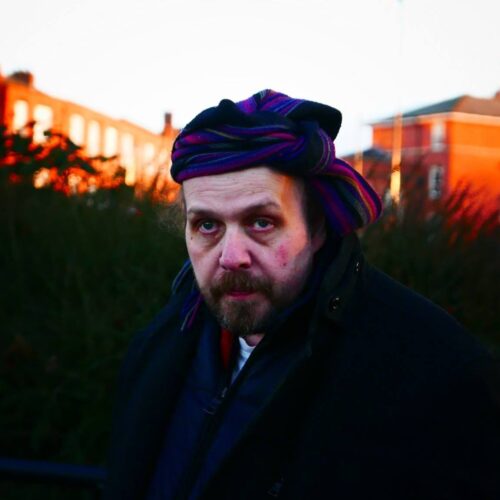
School songs
 Among recent CDs sent to me for review was an impressive 3-CD set of recordings by Hungarian children’s choirs of educational choral music written by the great Hungarian composer Zoltán Kodály who died in 1967 at the age of 85. Kodály was convinced that group singing rather than instrumental accomplishments should be at the heart of school musical education. He began to pursue this ideal seriously in 1937 with the publication of the first volume of Bicinia hungarica.
Among recent CDs sent to me for review was an impressive 3-CD set of recordings by Hungarian children’s choirs of educational choral music written by the great Hungarian composer Zoltán Kodály who died in 1967 at the age of 85. Kodály was convinced that group singing rather than instrumental accomplishments should be at the heart of school musical education. He began to pursue this ideal seriously in 1937 with the publication of the first volume of Bicinia hungarica.
In Renaissance times, a ‘bicinium’ was a musical composition for two voices that had a particular educational purpose. In the 16th century Martin Luther voiced his concern that children should learn both music and the psalms, and his influence helped to spread the singing of ‘bicinia’, with psalm texts, through Germany, Belgium, France and the Netherlands, as far as Italy. Many volumes of these songs were published as teaching aids, designed for groups of voices in consort rather than individual voices.
Kodály adopted the term ‘bicinia’ for his particular brand of Hungarian song-exercises, and over the following five years, he produced four volumes of these short two-part exercises, many originally without words – in all, 180 little two-part progressive vocal pieces. Many were based on Hungarian folk-songs, and they were introduced into primary schools as vehicles not only to cultivate singing, but also as an insight into national folk stories, an introduction into the geography of the country from which the tunes originated, and as counting and reading games as well as basic musical training in sight reading and careful listening.
Soon after the end of the war in 1945, the Hungarian government gave its official state support to Kodály’s enterprise, and it was not long before every primary school in the country was incorporating the Hungarian Bicinia into its curriculum, using it as a stepping stone to more advance singing challenges. By the mid 1950s, all young school children were involved in choirs and had learnt to read music fluently, singing in parts – in 1954 Kodály published Tricinia, providing a further 29 progressive vocal pieces, this time in three-parts. The graduation into more stimulating, longer pieces became a natural and widely accepted graduation, and the generation of musically well-trained primary children became a significant vocal force in the secondary school curriculum.
Soon there were mixed choirs of young adults all over the country, all with an intimate familiarity with their own folklore and its music, and able to read and perform a wide variety of choral music, undaunted by the prospect of singing in four, five or six parts, and quite accustomed to the demands of numerous choral directors who had gravitated to the singing academies overseen and encouraged by Kodály and his passionate and excited young followers. Singing had become a part of Hungarian culture, and with it had unfolded a love of choral music and poetry – a particular affection that only emerges with sound training and competence.
Kodály was a gentle, self-effacing man with a great genius for musical composition, and an immensely passionate belief in music as a vehicle for good teaching. Invigorated by this national approval, and already in his 60s, he would devote much of his time to travel the country, visiting schools, sharing their lessons, listening to them sing and helping them with new songs and insights. These efforts eventually proved singing in primary and secondary schools to be vital to the well-being, co-ordination, cultural awareness, discipline and positive spirit of team working that should be recognized everywhere as essential basic education.
The newly issued recordings of Kodály’s Bicinia hungarica and Tricinia include a set of impeccable performances from 1970, and two further discs made last year by children’s choirs from Budapest, Pécs and Kecskemet, directed by some of those who took part in the earlier recording. Unfortunately today we suffer a declining interest in, and awareness of, the immense value of musical activity in our schools, especially singing at primary level. It teaches children so much more than music. It teaches them to communicate. Kodály knew that a healthy beginning at primary level would eventually produce the competent adults. This takes a generation, but it is a wise and valuable investment which neglect will endanger our culture irretrievably.






It is a great pity none of our own composers did the same for our schools as Kodaly did but then with the constant changes of government and governmental interference there would never have been a consistent line of development for support for such an endeavour. We may produce great musicians of all types but I do seriously sometimes wonder how with such a scrappy musical education system that we have had since the 1960’s. There is constant dumbing down and belittling of styles and overall good general musicianship in favour of musically illiterate flash in the pan forms that children get little lasting benefit from. I am wondering what musical backwater Britain will be languishing in in the next 20 or 30 years unless a British Kodaly and a British government that understands the necessity of stability combined with a good sound musical knowledge comes about. Oh yes! pigs can fly, I know, I breed them!.
thank you for such an insighful blog, it has made me think that is for sure.
There are many music teachers in Britian and America who use Kodály’s philosophy with British and American folk music at the core. There is hope.
Perhaps not quite the same as in Hungary, but we have recently had our Sing Up programme which has empowered many school teachers who would otherwise have felt incompetent to teach singing. There has been a big difference in singing participation levels in the last 5 years in many primary schools, though this has not necessarily resulted in the organized advancement of musicianship, and it has not been about acquaintance with the British cultural heritage.
Very illuminating…and brought back happy memories of singing some of Kodaly’s folk-song arrangements at school. I’ve liked and appreciated his music ever since…